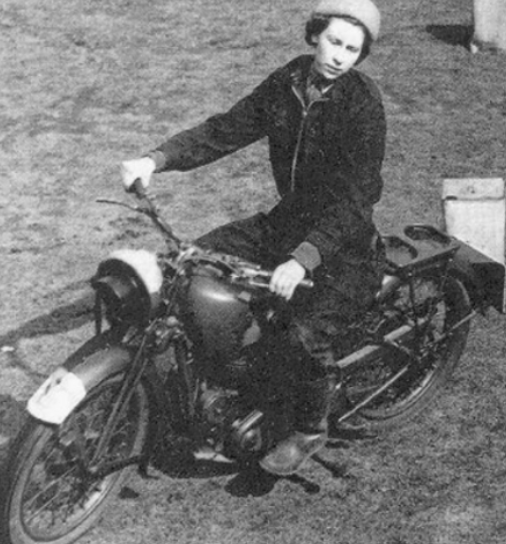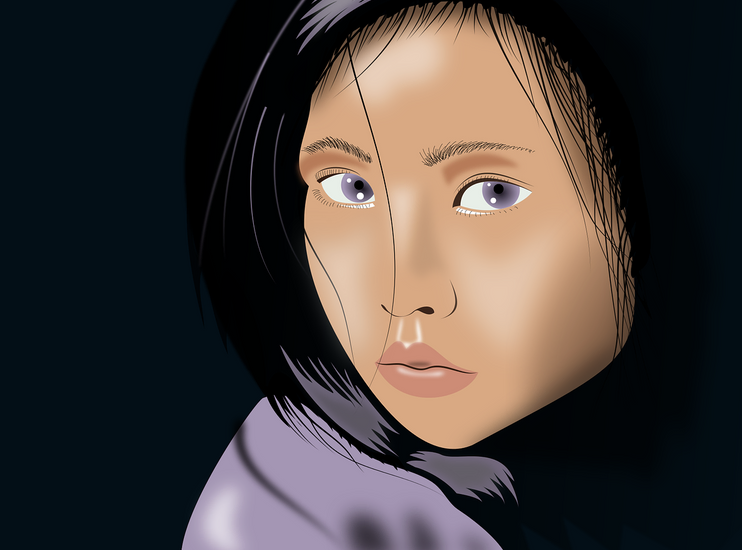4) A motorcycle, the death of Queen Elizabeth and teaching young people

This is a picture of Queen Elizabeth on a British Small Arms (BSA) Bantam 250. As the media covers the life of the Queen following her death, this image will be less frequently shown than Elizabeth with her family on the balcony at Buckingham Palace.
At the age of 18, Elizabeth undertook training in Aldershot as a member of the womens' Auxiliary Territorial Service (ATS). Women in the ATS could choose from operating anti-aircraft guns: controlling anti-aircraft searchlights, learning to use a radio or becoming a mechanic. Elizabeth chose the latter, learning how to ride and drive the motorcycles and trucks she was trained to repair. Returning to Buckingham Palace with oily overalls belied her role as a princess. A love of driving remained with her all her life.
I could focus on how female motorcyclists in the ATS contributed to the war, including the 717 who became casualties. Many became dispatch riders with the WRENS (Women's Royal Naval Service), taking orders to military sites around the UK, often during nighttime bombing raids. Or how this role encouraged women to take up motorcycling. Or, despite this, how motorcycling is male-dominated today, with only 25% of Gen Y riders being female. I would then consider gender in the classroom.
But I want to make a different point.
Human beings are a highly visual species. That is why social media posts are accompanied by images or, like Instagram and Tik Tok, are based on images. Experiments by two Princeton psychologists, Janine Willis and Alexander Todorov in 2006, published as 'First Impressions' in the July edition of 'Psychological Science', concluded that it takes just a tenth of a second to form an impression of someone from their facial features. Longer scrutiny seems to confirm our initial judgement.

The longer we see an image or images that are closely associated with our initial judgement, the more it confirms it. It is therefore less likely that the image of the Queen on the BSA will replace images of her in our minds on the Buckingham Palace balcony. When you think of the Queen, what images spring to mind and what characteristics do these images evoke?
As teachers, when we meet a class for the first time, our first impressions of the children are gathered from how they look. Initially, our response focuses on surface features: such as:
-
Hair colour
-
Skin colour
-
Eye colour
-
Facial shape
-
Nose shape and length
Then, we become aware of emotional expressions, such as:
-
Happiness
-
Sadness
-
Anxiety
-
Stress
-
Hostility
-
Confusion
-
Confidence
Our judgement is corroborated or called into question by our subsequent scanning of facial features and then interactions with our pupils. 'Confirmation bias' - the tendency to interpret new evidence as confirmation of one's existing beliefs or theories - can prevent us from re-evaluating our assessment.
Of course, pupils are doing the same to us. Research by Jonathan Glazzard, Professor of Teacher Education and Head of Department of Primary and Childhood Education at Edge Hill University, found that even KS1 pupils can correctly determine their teacher's state of mind within 30 seconds of the teacher entering the classroom (Waters (Ed) 2021)*. This is why advice to 'put a brave face on' if a teacher is experiencing stress, anxiety or depression, or other emotions associated with mental ill-health, does not work. We will cover this important subject in a future blog.
Being aware of the way we form judgements of other people enables us as teachers to keep an open mind and challenge our first impressions. It helps if the school has easily accessible online information about each child in the form of a short summary, alongside their academic scores. You could also ask each child to write one sentence about themselves that they would like you to know in the back of their exercise books. This is invaluable, particularly in a secondary school, where you might teach 150-200 pupils or more that you haven't met before.
Only finding out at the end of the year or during a parents' meeting that the pupil who you thought looked disinterested is training 5 nights a week for a national swimming competition is a missed opportunity to engage at a deeper level.
* Waters, S. (Ed.) (2021) 'Cultures of Staff Wellbeing and Mental Health in Schools' Open University Press/McGraw-Hill.